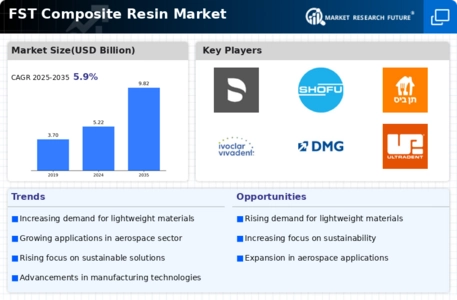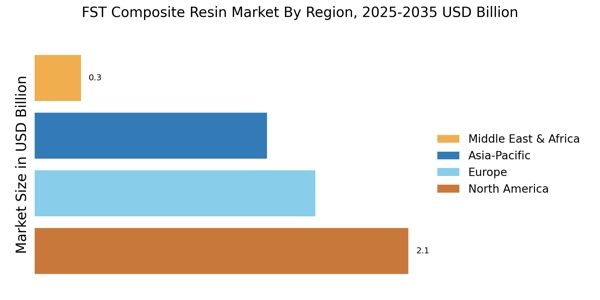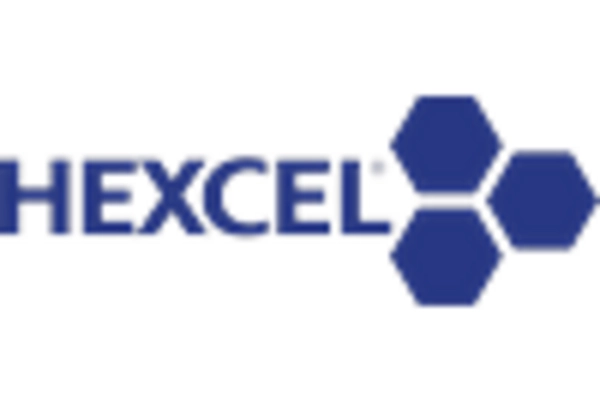Growth in Automotive Applications
The automotive industry is increasingly integrating composite materials to improve vehicle performance and reduce weight. The FST Composite Resin Market is poised to benefit from this trend, as manufacturers aim to meet stringent fuel efficiency standards and consumer demand for high-performance vehicles. In recent years, the use of composite resins in automotive applications has surged, with projections indicating a compound annual growth rate of over 10% through 2025. This growth reflects a broader shift towards innovative materials that enhance safety and performance, thereby driving the FST Composite Resin Market forward.
Rising Demand in Aerospace Sector
The aerospace sector is experiencing a notable increase in demand for lightweight and durable materials, which positions the FST Composite Resin Market favorably. As aircraft manufacturers seek to enhance fuel efficiency and reduce emissions, the adoption of composite materials is becoming more prevalent. In 2025, the aerospace industry is projected to account for a significant share of the FST Composite Resin Market, driven by the need for advanced materials that can withstand extreme conditions while maintaining structural integrity. This trend suggests that the FST Composite Resin Market will likely see substantial growth as manufacturers respond to these evolving requirements.
Emerging Applications in Electronics
The electronics sector is increasingly recognizing the advantages of FST composite resins, particularly in the production of lightweight and heat-resistant components. As electronic devices become more compact and efficient, the demand for materials that can withstand high temperatures and provide electrical insulation is growing. The FST Composite Resin Market is likely to see expansion in this area, with projections indicating a rise in applications across consumer electronics and telecommunications. This emerging trend suggests that the FST Composite Resin Market will continue to diversify, tapping into new opportunities in the electronics domain.
Expansion in Construction and Infrastructure
The construction and infrastructure sectors are witnessing a paradigm shift towards the use of composite materials, including FST resins, due to their superior properties. These materials offer enhanced durability, resistance to environmental factors, and reduced maintenance costs. As urbanization accelerates, the demand for innovative building materials is expected to rise, thereby propelling the FST Composite Resin Market. In 2025, the construction sector is anticipated to represent a substantial portion of the market, as stakeholders increasingly recognize the benefits of incorporating composite resins into their projects.
Increased Investment in Research and Development
Investment in research and development within the FST Composite Resin Market is on the rise, as companies strive to innovate and improve product offerings. This focus on R&D is likely to lead to the development of new formulations and applications, enhancing the performance characteristics of composite resins. As industries such as aerospace, automotive, and construction seek advanced materials, the FST Composite Resin Market stands to gain from these innovations. The trend suggests that ongoing investment in R&D will be a key driver of market growth, fostering competitiveness and technological advancement.




















Leave a Comment